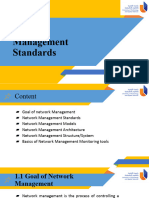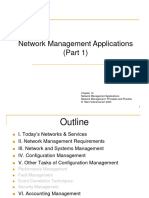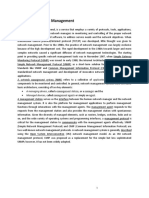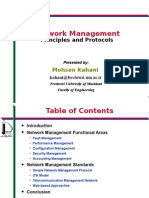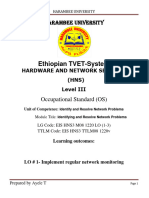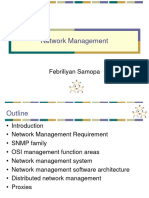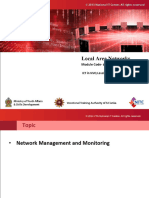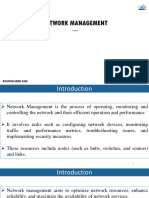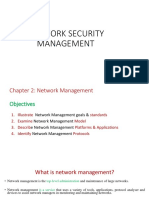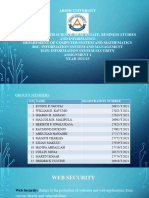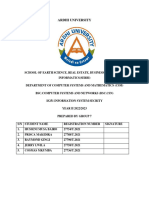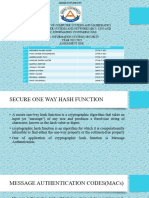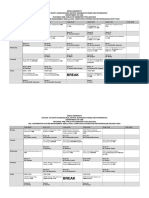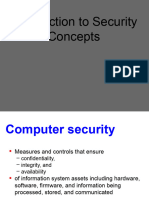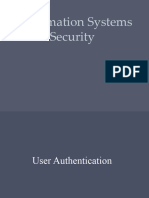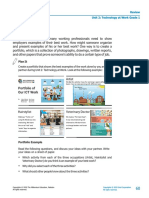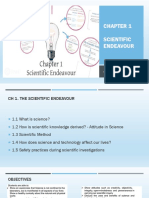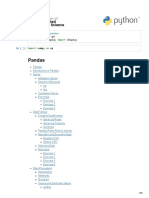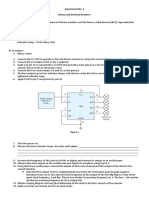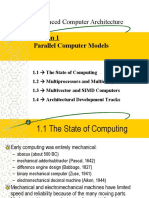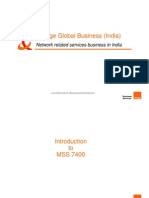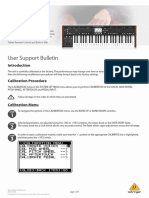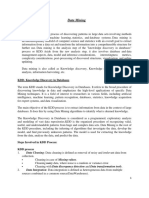0% found this document useful (0 votes)
35 views33 pagesLecture 2
This document discusses network management architecture. It begins with an introduction to network management and its importance. It then defines network management and discusses the key functions of monitoring, configuration, and troubleshooting. It also covers network management standards, protocols like SNMP, and mechanisms for monitoring, instrumentation, and configuration. The overall document provides an overview of considerations and components for designing a network management architecture.
Uploaded by
makangara22Copyright
© © All Rights Reserved
We take content rights seriously. If you suspect this is your content, claim it here.
Available Formats
Download as PPT, PDF, TXT or read online on Scribd
0% found this document useful (0 votes)
35 views33 pagesLecture 2
This document discusses network management architecture. It begins with an introduction to network management and its importance. It then defines network management and discusses the key functions of monitoring, configuration, and troubleshooting. It also covers network management standards, protocols like SNMP, and mechanisms for monitoring, instrumentation, and configuration. The overall document provides an overview of considerations and components for designing a network management architecture.
Uploaded by
makangara22Copyright
© © All Rights Reserved
We take content rights seriously. If you suspect this is your content, claim it here.
Available Formats
Download as PPT, PDF, TXT or read online on Scribd
/ 33
